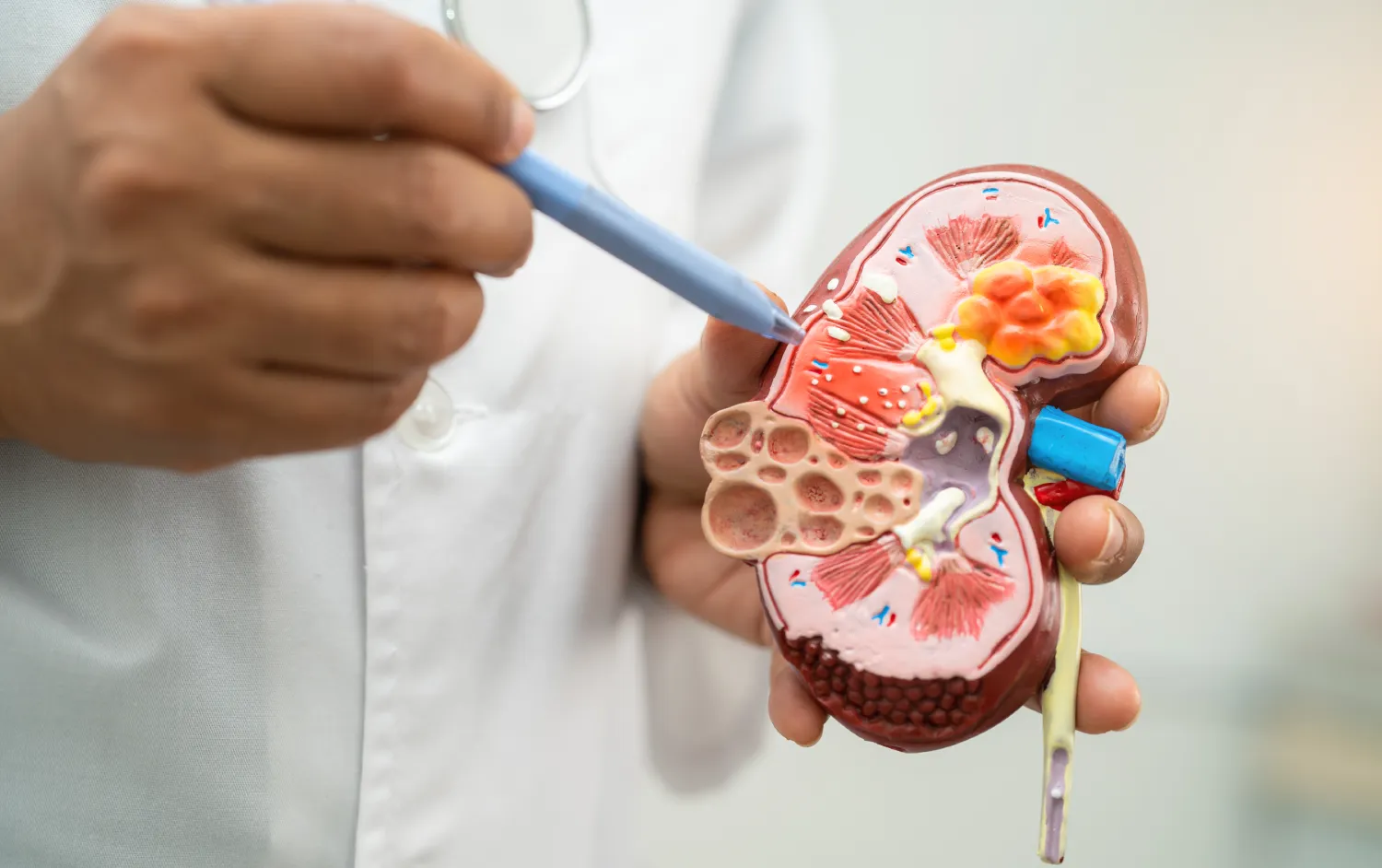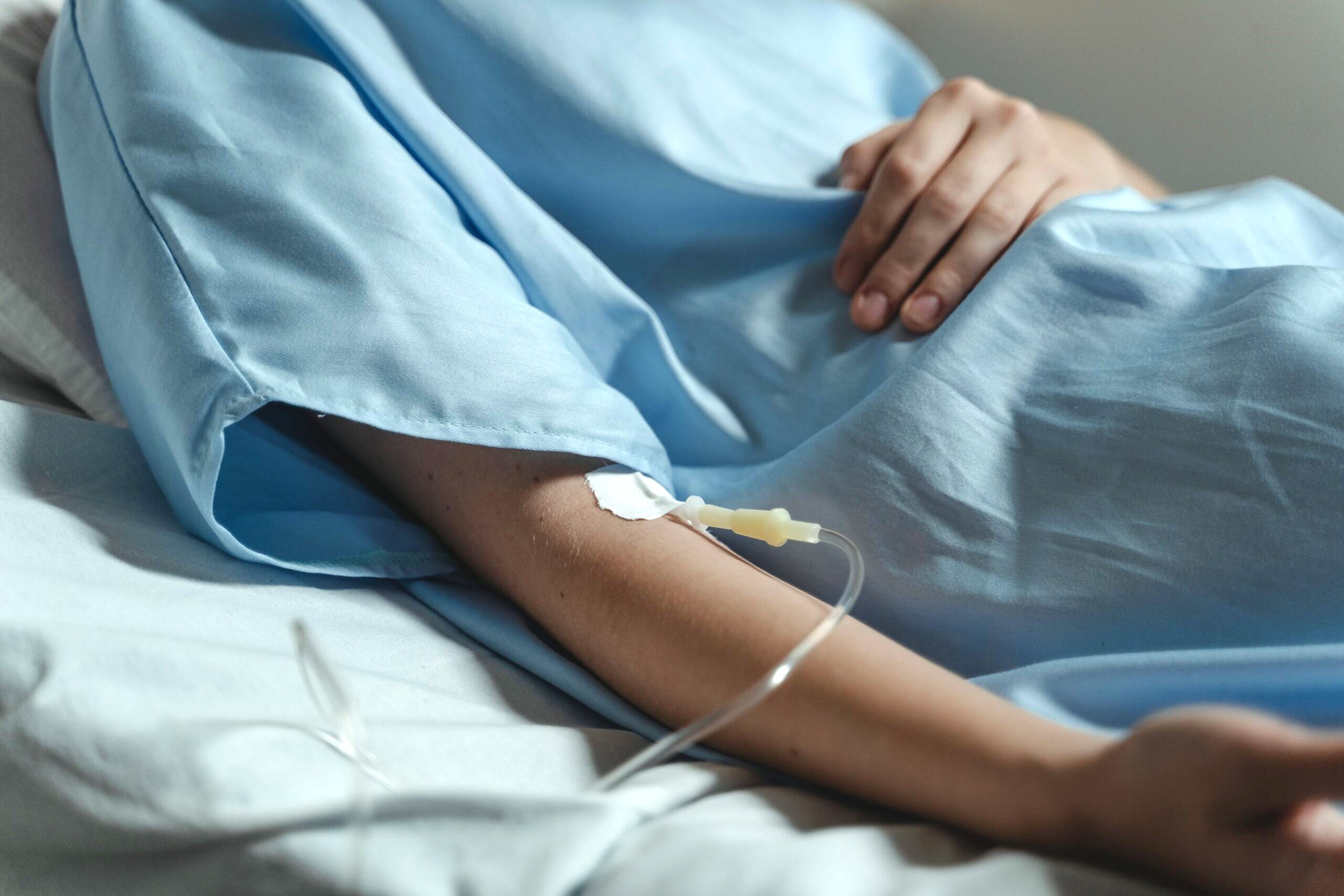Partial Nephrectomy


What is Partial Nephrectomy?
A partial nephrectomy is a surgical procedure where part of the kidney is removed. This operation is primarily performed to extract a mass from the kidney, preserving the remaining healthy part. It is an advantageous choice for patients, as it aims to maintain better kidney function compared to the complete removal of the kidney.
The procedure is often considered when partial removal is feasible and safe, otherwise, a complete removal of the kidney may be conducted instead.
Pre-operative Preparations
Pre-operative preparations for a partial nephrectomy can help lead to successful surgery and recovery.
- Consultation: The specific details of the surgery can be discussed, including the surgical approach and potential risks.
- Medical Evaluation and Testing: Undergoing a comprehensive medical evaluation, which may include blood tests, imaging studies, and other diagnostic tests to assess the patient’s overall health and the specifics of the kidney condition.
- Medication Review: Current medications will be reviewed and may be adjusted before surgery.
- Fasting Instructions: Fasting is usually required for several hours before the surgery to prevent complications during anaesthesia.
Partial Nephrectomy Procedure
The partial nephrectomy procedure involves several steps, which can vary slightly depending on whether an open, laparoscopic, or robotic method is used.
Surgical Approach
- Open Partial Nephrectomy: The surgeon makes a large, single incision in the patient’s abdomen or flank, allowing clear access to the kidney. This approach is generally recommended for larger or more invasive tumours.
- Laparoscopic Partial Nephrectomy: The surgeon makes three to five smaller “keyhole” incisions, using a laparoscope for internal visualisation and surgical tools for the procedure.
- Robotic Partial Nephrectomy: This a less invasive option, which involves small “keyhole” incisions and the use of a robotic system controlled by the surgeon. This method is particularly beneficial for smaller kidney tumours and when preserving kidney function is necessary.
Procedure Steps
- Preparation and Anesthesia: The patient receives general anaesthesia, ensuring they are unconscious and pain-free during the procedure.
- Incisions: Incisions are made through methods that differ depending on the type of surgical approach used.
- Tumour Localisation and Blood Flow Management: The surgeon locates the tumour and may temporarily stop blood flow to the kidney to minimise blood loss and improve surgical visibility.
- Kidney Cooling (if needed): Application of crushed ice around the kidney to lower its temperature, protecting it from damage due to reduced blood flow.
- Tumour Removal and Kidney Reconstruction: The surgeon carefully removes the tumour and reconstructs the kidney tissue.
- Closure and Drainage: The incisions are closed using stitches or staples. Small drainage tubes may be inserted to remove excess fluid or blood.
Post-Procedure Care and Recovery
After a partial nephrectomy, patients generally experience a recovery period ranging from 4 to 12 weeks, depending on the type of surgery. Immediate post-surgery care involves monitoring in a recovery room, managing pain, and addressing any anaesthesia-related side effects like nausea.
Patients are encouraged to walk as soon as possible to promote healing and prevent complications such as blood clots or pneumonia. The urinary catheter, if placed, is usually removed within two days. Initial dietary restrictions to a liquid diet are common, gradually progressing to solid foods.
Recovery at home requires avoiding strenuous activities and heavy lifting for about six weeks. Regular follow-up visits can help monitor kidney function and overall recovery.


Benefits of Partial Nephrectomy
Partial nephrectomy has many benefits, in terms of preserving kidney function and improving overall health outcomes.
-
Preservation of Kidney Function
By removing only the diseased or cancerous part of the kidney and leaving the healthy tissue intact, this procedure aids in maintaining better overall kidney function compared to total kidney removal.
-
Lower Risk of Chronic Kidney Disease
Keeping a portion of the kidney functional reduces the risk of developing chronic kidney disease, which can occur following the complete removal of a kidney.
-
Improved Quality of Life
Patients often experience a better quality of life post-surgery due to preserved kidney function, which is necessary for the body's filtration system.
-
Effective Cancer Treatment
For kidney cancer, partial nephrectomy is a highly effective treatment, especially when the cancer is localised and has not spread. It allows for targeted removal of the tumour while sparing the rest of the kidney.
-
Reduced Need for Dialysis
By preserving kidney function, there is a decreased likelihood of requiring dialysis in the future, a consideration for patients’ long-term health.
Potential Risks and Complications
As with any surgical procedure, partial nephrectomy comes with potential risks and complications.
- Bleeding: The risk of blood loss during or after the surgery, which may require a blood transfusion.
- Infection: The possibility of infection at the surgical site or in the urinary tract.
- Injury to Nearby Organs: The potential for accidental damage to surrounding organs or tissues during surgery.
- Blood Clots: The risk of developing blood clots, particularly in the legs, which can be life-threatening if they travel to the lungs.
- Kidney Function Impairment: Although rare, there is a risk of impaired kidney function or even kidney failure following the surgery.
- Pain and Discomfort: Post-operative pain and discomfort at the incision site, which is usually managed with pain medication.
- Anesthesia Risks: Complications related to the use of anaesthesia, such as allergic reactions or breathing difficulties.

Dr Lee Fang Jann 
Dr Lee is a urologist and kidney transplant surgeon with a broad-based expertise of all urological disorders
He has subspecialty focus on men’s health and male infertility, and special interest in minimally invasive prostate enlargement therapy and kidney stone treatment. Dr Lee has received numerous awards for service excellence such as the Service With A Heart Award (2006-2008, 2011) and the Singapore Health Quality Service Award (2016).
- Bachelor of Medicine and Bachelor of Surgery (Singapore)
- Membership of The Royal College of Surgeons (Edin)
- Master of Medicine (Surgery) (Singapore)
- Fellowship of the Academy of Medicine (Urology)
- Clinical fellowship at Oxford Transplant Centre in the UK
Prior to entering private practice, Dr Lee served in the public sector for 16 years at SGH, where he initiated dedicated clinics evaluating and treating patients with complex men’s health and fertility issues. He also led the Renal Transplant Program and laparoscopic donor nephrectomy service as Surgical Director.
Apart from clinical work, Dr Lee is active in academia and believes in the importance of grooming the next generation of doctor. He was Senior Clinical Lecturer at NUS’ Yong Loo Lin School of Medicine and currently, Adjunct Assistant Professor at the Duke-NUS Medical School. Dr Lee is also regularly invited to share his experiences locally and regionally through lectures, workshops and surgical demonstrations.
Our Clinic Locations
Farrer Park Medical Centre, #08-05
1 Farrer Park Station Rd, Singapore 217562
Mon – Fri: 8:30am to 5:30pm
Sat: 8:30am to 12:30pm
3 Mount Elizabeth, #11-16 Medical Centre, Singapore 228510
Mon – Fri: 8:30am to 5:30pm
Sat: 8:30am to 12:30pm
Frequently Asked Questions (FAQ)
What is the success rate of partial nephrectomy?
Partial nephrectomy has a high success rate, especially for localised kidney cancers. Most patients remain cancer-free for up to 5 years post-surgery. The exact success rate varies based on individual health conditions and tumour characteristics.
How long is the recovery period after a partial nephrectomy?
Recovery time varies depending on the type of surgery (open, laparoscopic, or robotic) and the patient’s overall health. Generally, recovery takes 4 to 12 weeks, with robotic surgeries often having a shorter recovery period.
Will I experience pain after the surgery?
Some pain and discomfort are expected post-surgery, especially after an open partial nephrectomy. Pain management techniques and medications are used to control this.
How long will I need to stay in the hospital?
Hospital stays range from 3 to 7 days, depending on the surgical method and individual recovery rates.
Are there any dietary restrictions after the surgery?
Patients may need to maintain a liquid diet for the first 1-2 days post-surgery, gradually reintroducing solid foods as recovery progresses.
When can I return to normal activities?
Most patients can resume normal activities within 8 to 12 weeks after open surgery, and 4 to 6 weeks after robotic surgery. This varies based on individual recovery and the nature of the patient’s regular activities.
Can I live a normal life with part of my kidney removed?
Yes, most people can lead normal lives with part of their kidney removed. The remaining kidney tissue usually compensates well, maintaining adequate kidney function.